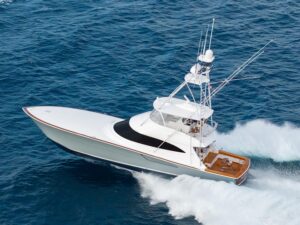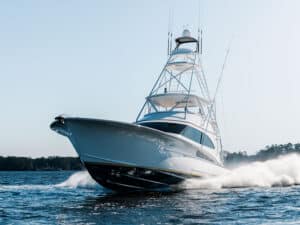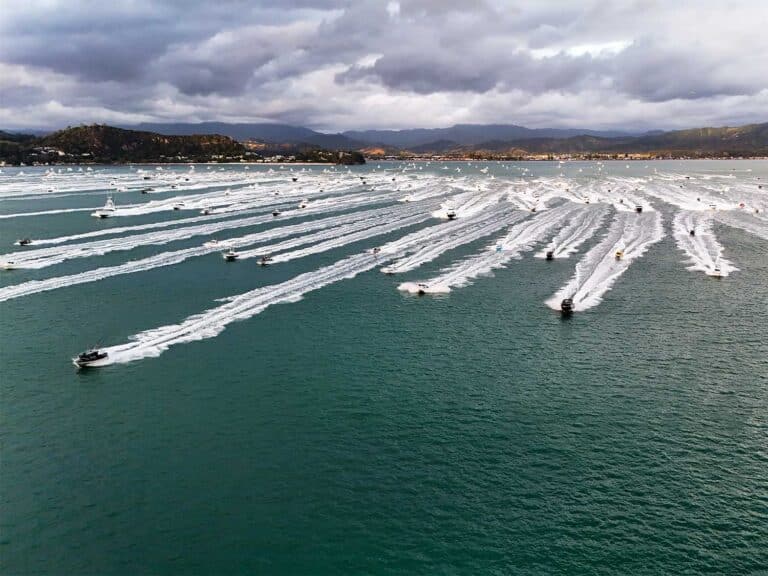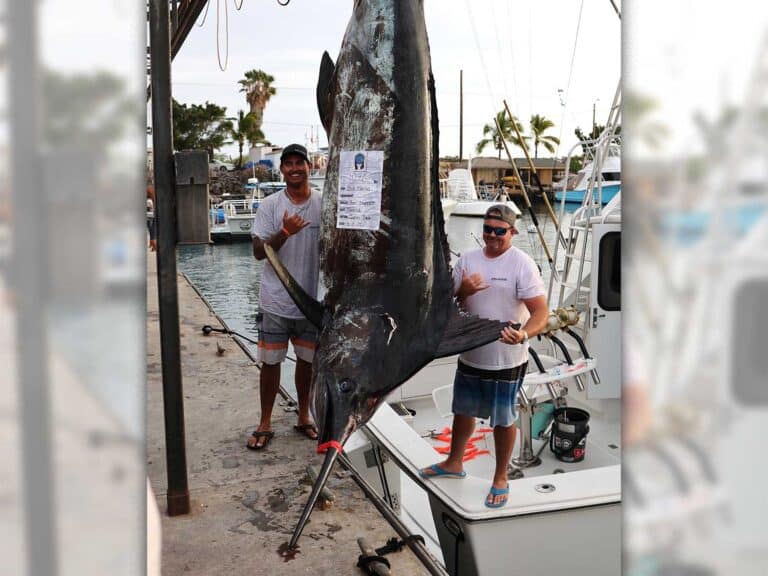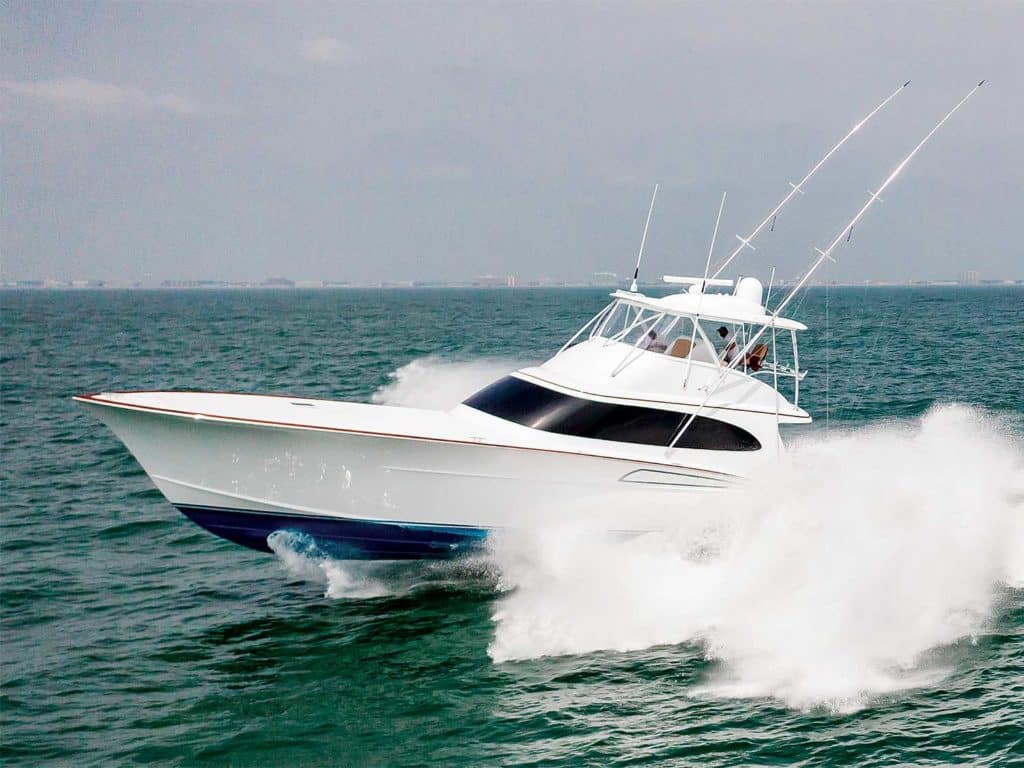
Our passion for sport fishing runs deep. Even as far back as elementary school, we doodled boats in a notepad during class, dreaming about where we’d fish them. While some let that dream die, others kept the fire alive. Born and bred in Maryland, Jon Duffie grew up with boatbuilding on his mind and billfish in his blood. A longtime captain of his family’s sportboat, Billfisher, he has experience both on the water and in the yard. And being from a construction family, it was only natural to combine all those factors and build the next one. Working with Rhodes Yacht Design, Duffie’s pencil sketch began to take shape, and the end product is clearly a Best in Show.
Many boat lovers can pick out a builder just by the lines, but when it’s your turn to build one, how would you design it? What you decide sets the tone for the build—and ultimately defines the builder. Duffie went for a classic look, with a traditional broken sheer—aligning it with the window, cap and vent all in the same shape to give it a fluid side profile. As a lover of the traditional design myself, his vision and final product conveyed that intention 100 percent. And as a new builder, if you’re going to do it, you’d better do it right if you ever want Hull No. 2 to see the light of day.
Billfisher is indeed a do-everything boat, built to not just do everything, but also do it all well. From the Atlantic to Pacific, Duffie wanted to excel at all venues. With help from professional engineer and naval architect Jesse Rhodes, the 64 hull began to take shape using the finest materials available, including Bruynzeel okoume marine plywood, Pro-Set epoxy and Vectorply fiberglass, and then faired and painted with Awlgrip products.
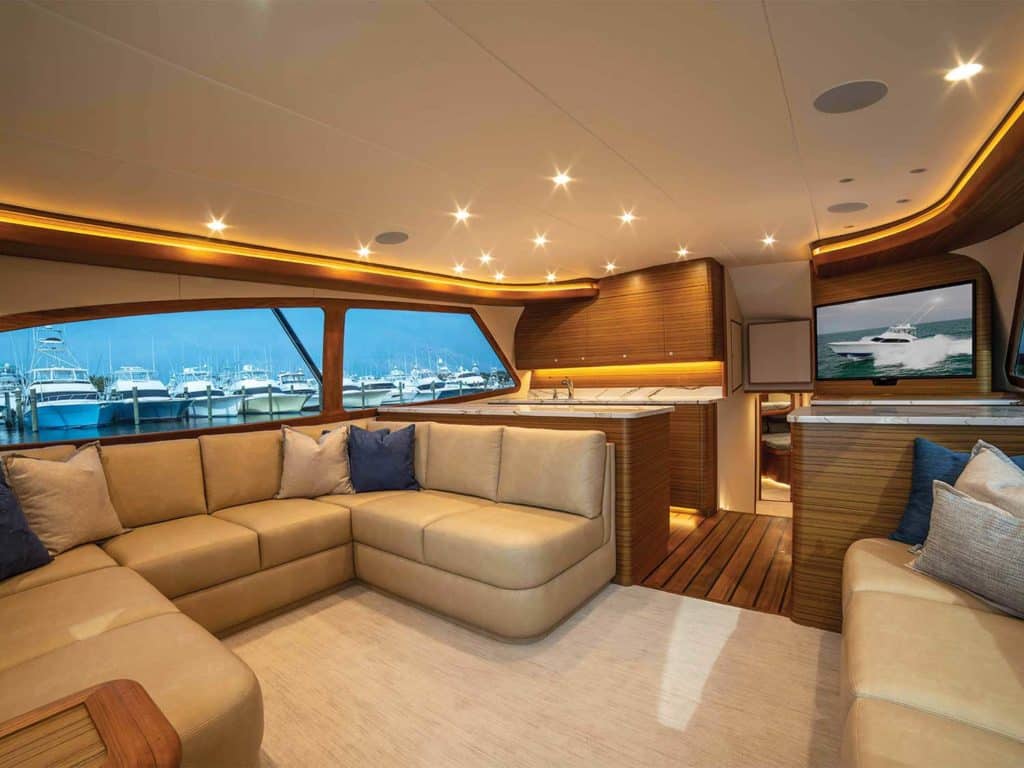
Interior
This 64’s three-stateroom, three-head arrangement accommodates Duffie’s eight- to nine-person tournament team and successfully combines a simple modern design with elegant textiles. The salon is bright and spacious with neutral tones; the cabinetry was constructed with Belkov Yacht Company out of Annapolis, Maryland, using engineered teak with horizontal grain. The teak and extra-wide plank wenge-wood flooring really stands out and is a fresh upgrade to the ancestral teak-and-holly flooring.
The state-of-the-art galley is simple, with white marble countertops that possess slightly abstract but stunning dark-gray veins running through it, and the salon arrangement is one of family and camaraderie. A large U-shaped sofa sits across from a double love seat, with room for all your family and friends to trade battle stories from the rip.
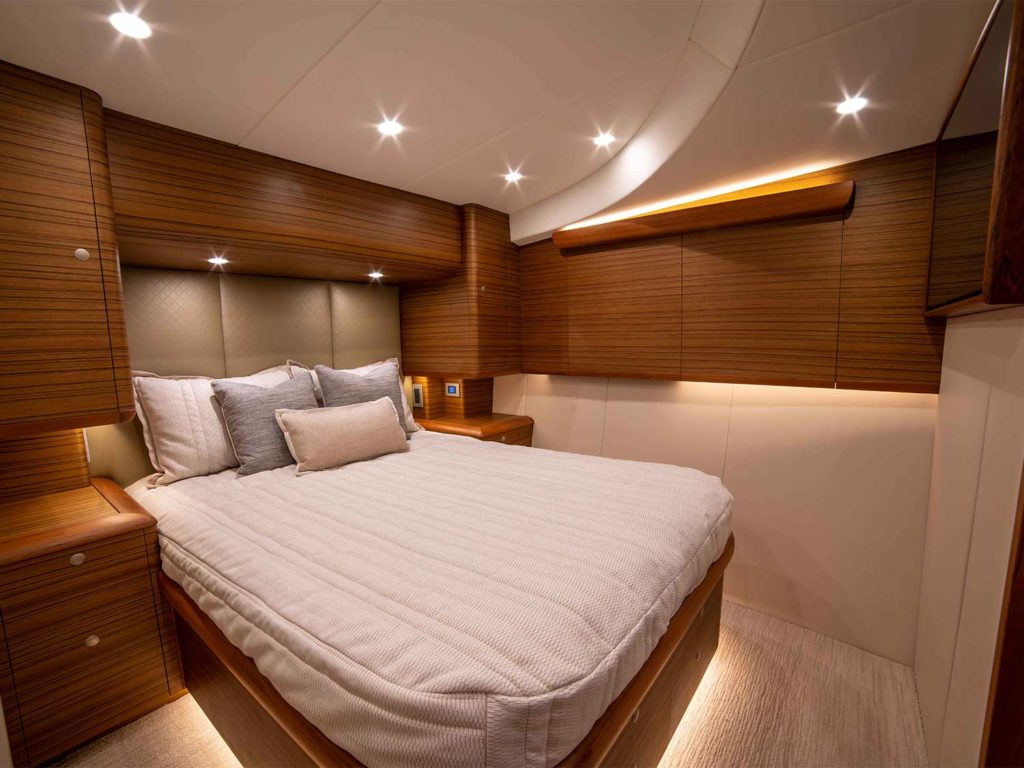
Down the companionway steps, the layout features a spacious master stateroom with private head to port. The master shower includes a recessed storage area to keep all shower items secure and vertical instead of on the floor after a rough fishing day. The VIP stateroom is forward and embodies both a lower queen bunk and an upper single bunk; another private head is located here as well. The companionway also reveals a comfortable double-bunk room to starboard, and the guest head is located just aft of the bunk room.
Also to starboard, a custom tackle center with slide-out storage houses rods of all classes, and a large bait freezer is nestled below a rigging countertop. Another noted feature is the forward bilge storage. Under the companionway carpet is a large hatch that opens up to what feels like a one-car garage. Duffie and I are by no means small men, and we both fit with ease. The ability to hold another three men means that there is a ton of additional storage for dry provisions and travel supplies; it also allows easy access for bow-thruster repairs and the forward plumbing to be handily inspected.
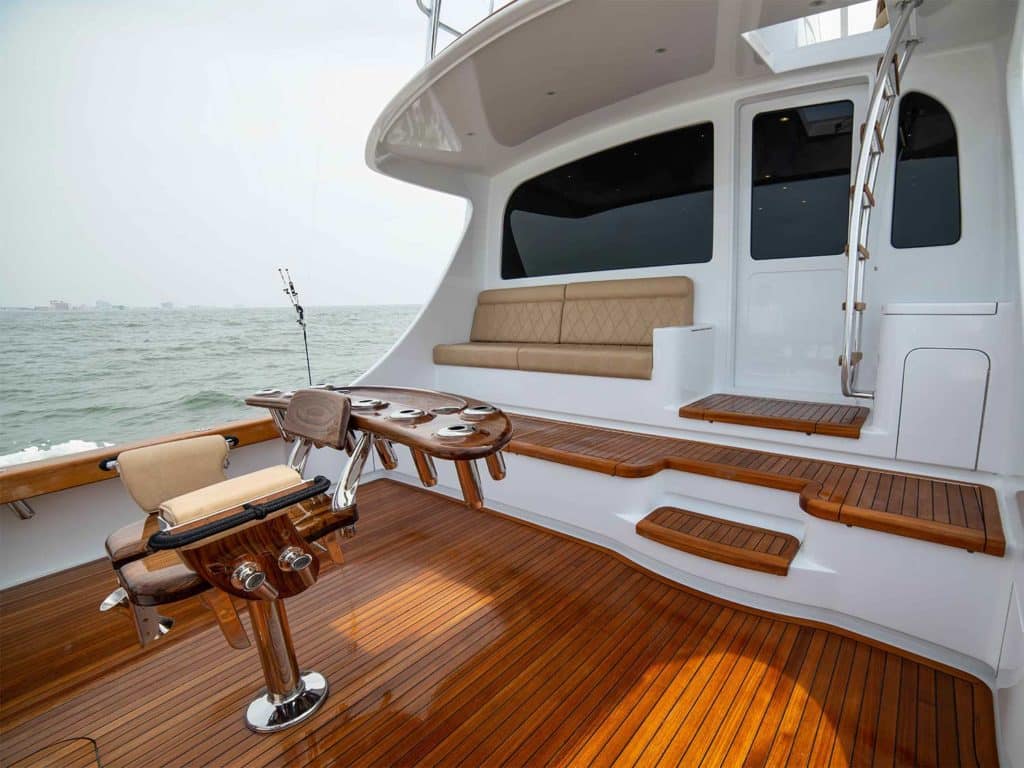
Exterior
The teak cockpit is spacious enough to land a grander, and the transom door was measured and specifically cut to handle such a task. This challenge was proved just three weeks after my sea trial when the Billfisher team landed the Maryland state record blue marlin this summer.
Duffie’s favorite element of the cockpit design is the drainage system. A French drain runs the length of the transom, keeping the deck free of standing water without having to rely on the water finding its way to the traditional corner scuppers. A large fish box is located in the transom, and full mezzanine seating is outfitted with beautiful quilted upholstery. The step features storage, a freezer with custom bait trays, and a drink box with built-in organization. A tackle center is located on the starboard side under the bridge ladder, and a large plumbed icebox resides in the step below it.
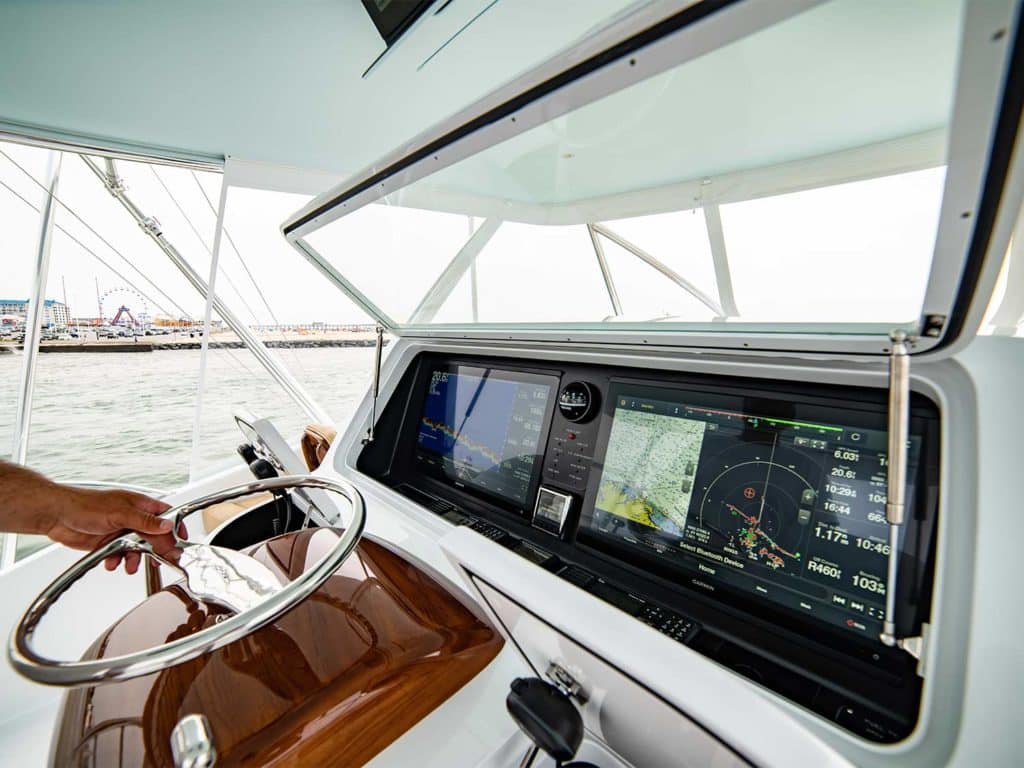
The bridge is equipped with a single, centered helm chair and two long benches on either side with storage underneath. Forward of the helm pod is a double seat with molded-in cup holders. The helm features dual 22-inch Garmin displays in the command station and a single 16-inch display in the drop-down box between twin Caterpillar displays and the Garmin autopilot heads. Billfisher also features a Furuno Omni sonar. Located above the helm chair are two recessed teaser reels; 42-foot tournament outriggers complete the captain’s effects.
Engine Room and Performance
The engine room is accessed by a center hatch, where you’re immediately met with a pump room housing the Spot Zero water-purification system, a Dometic XZII 2200 watermaker, two Eskimo ice chippers and, located aft, a Seakeeper 18. Through the watertight door, twin Caterpillar C32 ACERTs producing 1,925 mhp per side are paired with Twin Disc MGX quick-shift gears. Both sides of the engines are completely accessible, with over 2 feet of space between the motor and the hull—Duffie citing this as being an important part of the build—to have everything in easy reach.
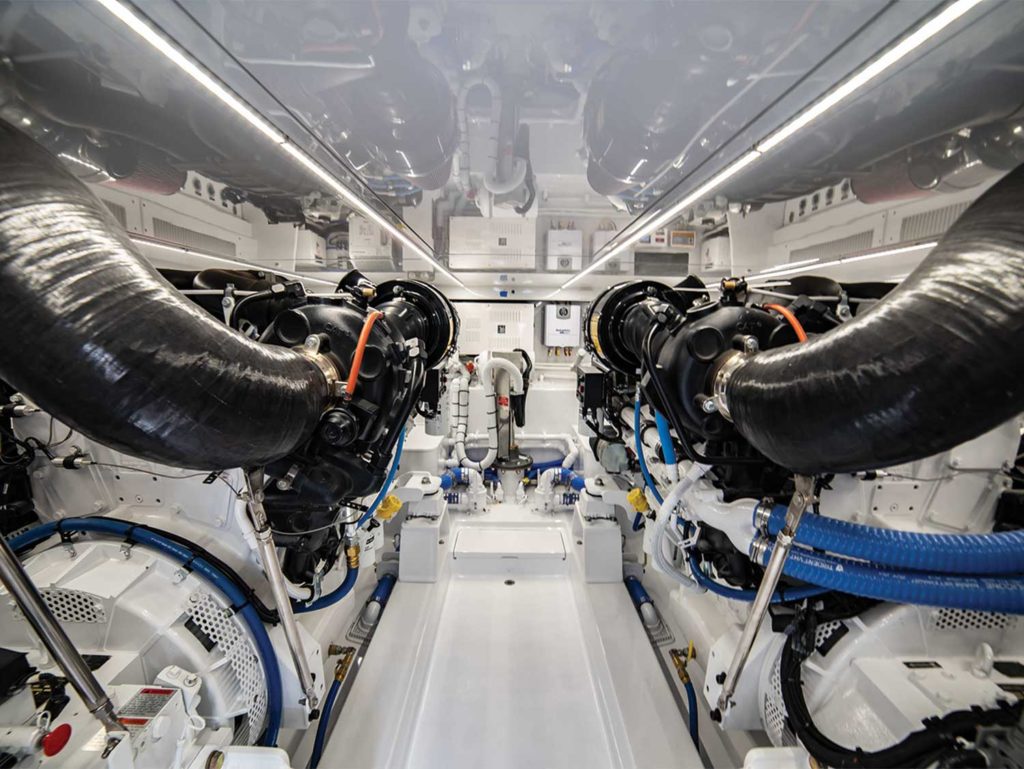
All of today’s top tech round out the remainder of the engine room equipment, including an ElectroSea Clearline system paired with a closed-circuit freshwater cooling system, the omnidirectional transducer, and custom battery storage—all of which are impeccably organized.
Read Next: In summer 2021, the Billfisher team broke the Maryland state record for blue marlin.
As we pushed through the waft of Boardwalk Fries and out the Ocean City inlet, the sounds of kids on the Ferris wheel were quickly drowned out. Duffie slid the Palm Beach single-lever controls forward and turned loose the 3,850 horses below our feet, leaving the channel fishermen in our wake. After we were up on plane, Duffie described the engineering that went into the drivetrain. With help of CJR Propulsion, Duffie and Rhodes designed an engineered drivetrain: The struts, propellers and rudders are all flow-aligned to increase efficiency and reduce vibration and noise.
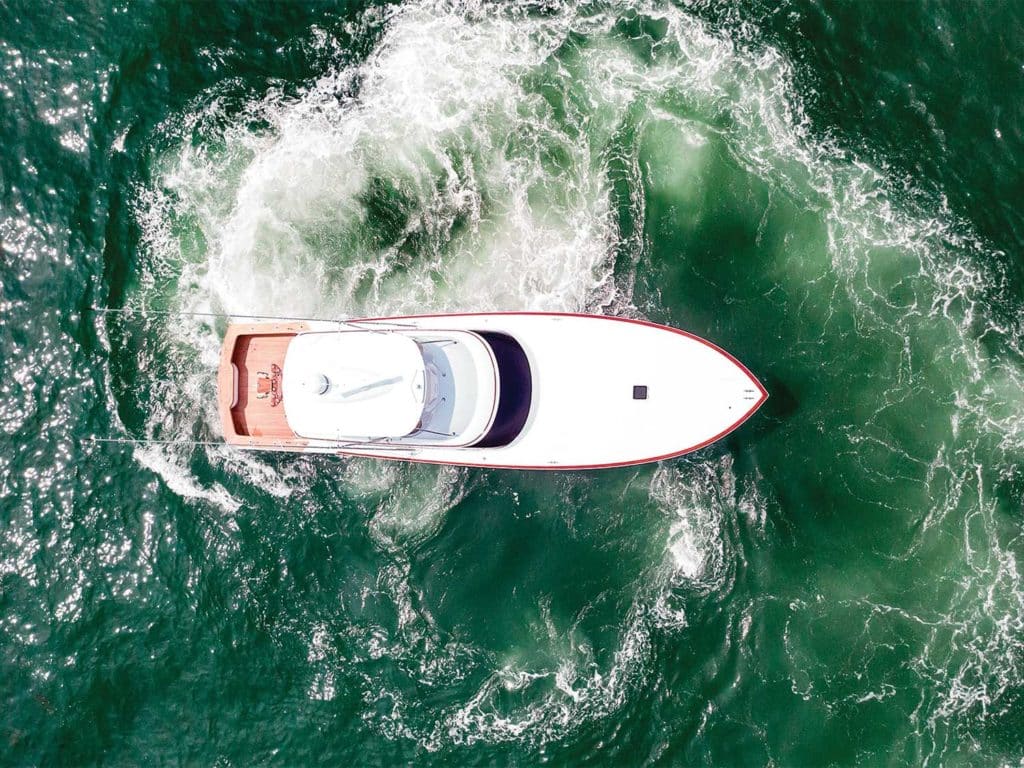
At 1,950 rpm (74 percent load), the boat ran at 36 knots and burned 70 gph per side; 2,050 rpm (80 percent load) managed 37.5 knots, burning 75 gph per side. In all directions in a 2- to 4-foot chop, the 64 remained quiet, nimble and, most importantly, dry. Pinning the throttles all the way forward, the CATs turned 2,350 rpm, cutting the ocean with a top end of 43 knots and burning 100 gph per side. At this speed, Billfisher ate up everything we threw at her, remaining tight and steady. And even through the fast-and-furious fishing paces, she easily accomplished whatever Duffie requested.
If I had one recommendation to the young Jon Duffie sketching out this sport-fisher on a bar napkin, it would be to add reverse lights on the transom because I can see this boat going backward offshore nearly as much as she goes forward. Pretty work, captain. Looking forward to Hull No. 2.
Duffie Boatworks 64 Specs
- LOA: 64’4″
- Beam: 18’2″
- Draft: 5’11”
- Displ: 93,000 lb.
- Fuel: 2,100 gal.
- Water: 400 gal.
- Power: CAT C32 ACERT, 1,925 Mhp
- Gear/Ratio: Twin Disc, 2.03:1
- Propellers: CJR MRK Superprops, 5-blade
- Paint: Awlcraft, Cloud White
- Climate Control: Dometic
This article originally appeared in the February 2022 print issue of Marlin.
